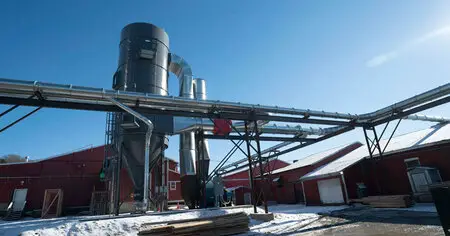
In the realm of air filtration and industrial operations, maintaining clean and healthy indoor air quality is a top priority. Dust and contaminants generated during manufacturing processes can pose serious health risks to employees and hinder production efficiency. To combat these challenges, many industries rely on baghouse dust collectors as a key component in their air filtration systems. In this informative article, we will delve into the world of baghouse dust collectors, exploring their significance and role in improving air quality in industrial settings.
Understanding Baghouse Dust Collectors
Baghouse dust collectors are integral components of air filtration systems used in a wide range of industrial applications. These sophisticated devices are designed to capture and remove airborne particles, dust, and contaminants from the air within manufacturing facilities. Baghouse dust collectors are renowned for their efficiency and ability to provide a cleaner and safer working environment.
Key Components of a Baghouse Dust Collector
A typical baghouse dust collector consists of several crucial components, including:
- Filter Bags: These specialized bags are at the core of the system and are designed to capture and retain dust particles.
- Cleaning Mechanism: To maintain filter bag efficiency, baghouse collectors include cleaning mechanisms like pulse jet systems or reverse air flow.
- Dust Collection Hoppers: Collected dust is directed into hoppers for easy disposal.
- Exhaust Fan: Facilitates the movement of air through the system.
- Ductwork and Airflow Controls: Ensure the proper distribution of air and capture of contaminants.
The Significance of Baghouse Dust Collectors
Improved Air Quality
The primary role of baghouse dust collectors is to significantly enhance indoor air quality within industrial facilities. By efficiently capturing and removing dust and contaminants, these systems provide employees with a cleaner and safer atmosphere, reducing the risk of respiratory problems and allergies.
Regulatory Compliance
Many industries are subject to strict regulations governing air quality and emissions. Baghouse dust collectors help industrial facilities comply with these regulations, ensuring that they meet environmental standards and avoid potential fines.
Enhanced Safety
Industrial facilities often face hazards related to dust, including fire and explosion risks. Baghouse dust collectors play a crucial role in mitigating these hazards by capturing and containing combustible dust particles, contributing to a safer workplace.
Increased Productivity
Clean air is vital for employee health and productivity. Baghouse dust collectors minimize dust-related downtime and equipment maintenance, leading to increased productivity and smoother operations.
Energy Efficiency
Efficient baghouse dust collectors equipped with high-quality components can lead to lower energy consumption, resulting in cost savings and alignment with sustainability goals.
Choosing the Right Baghouse Dust Collector
Selecting the appropriate baghouse dust collector for your industrial facility requires careful consideration of factors such as the type and volume of contaminants generated, the facility’s size and layout, and compliance with industry-specific regulations. Collaborating with reputable dust extraction system manufacturers and dust collector filter bags suppliers is essential to ensure the effectiveness and reliability of your system.
Conclusion
In conclusion, baghouse dust collectors serve as key components in air filtration systems for industrial facilities. Their significance cannot be overstated, as they contribute to improved air quality, regulatory compliance, enhanced safety, increased productivity, and energy efficiency. When investing in a baghouse dust collector, it’s imperative to assess your facility’s unique needs and partner with trusted manufacturers and suppliers to achieve optimal results. By doing so, you not only protect the well-being of your workforce but also contribute to a more efficient and compliant operation.
